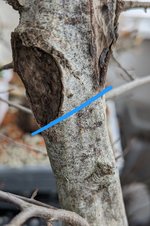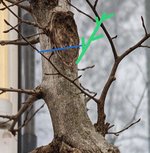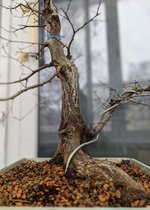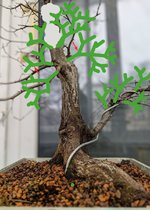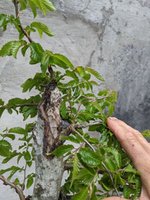proninyaroslav
Mame
This old Hornbeam was collected a couple of years ago from the mountains and grew well from the previous owner. But what I don't like about it is the apex, it doesn't have any taper and it has a lot of scars .
That's why I wanted to rerbuild the apex it this year. In the photo, I noted the planned cut. To the left of the cut there is a branch, to the right there are no branches.
I'd like to get back budding at this area, as this is the best place to create a new apex (redirecting the left branch to the right will be difficult). What is the best season for this operation?
I'm afraid to do this in the spring as the tree is not very strong and I might get a dieback down the trunk. Maybe it's worth doing this in June-July, when the Hornbeam gains strength? Will I get back budding after summer pruning?
That's why I wanted to rerbuild the apex it this year. In the photo, I noted the planned cut. To the left of the cut there is a branch, to the right there are no branches.
I'd like to get back budding at this area, as this is the best place to create a new apex (redirecting the left branch to the right will be difficult). What is the best season for this operation?
I'm afraid to do this in the spring as the tree is not very strong and I might get a dieback down the trunk. Maybe it's worth doing this in June-July, when the Hornbeam gains strength? Will I get back budding after summer pruning?

